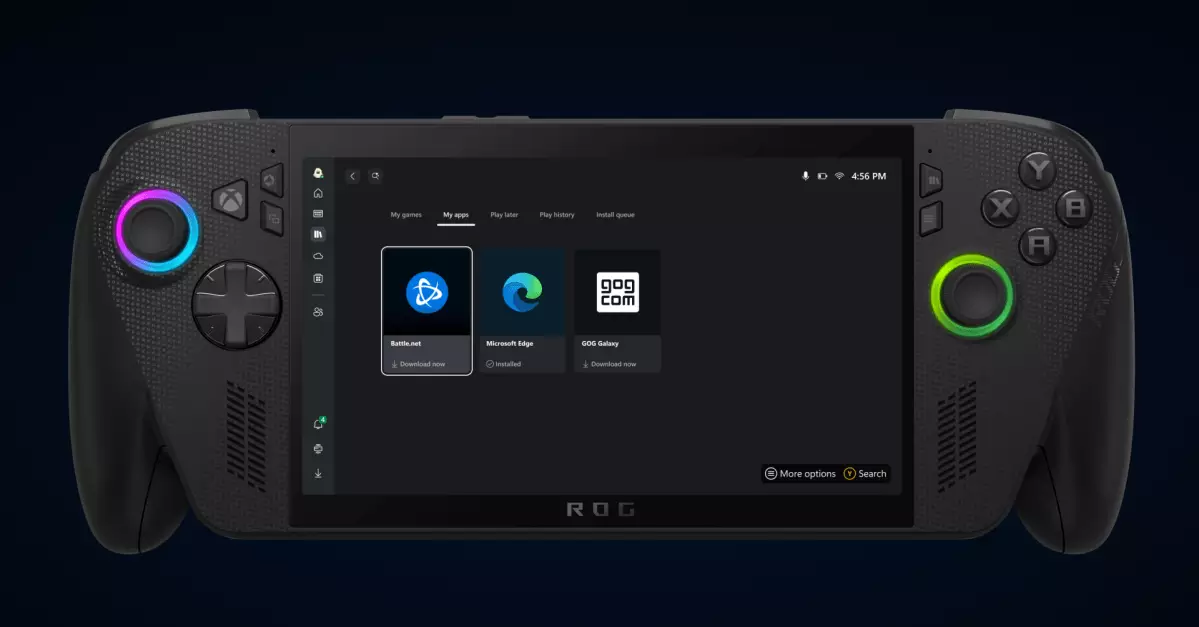In an era where gaming is rapidly transcending traditional boundaries, Microsoft’s latest innovation with the Xbox app for Windows 11 signals a significant shift toward a more integrated and user-friendly gaming environment. The introduction of the new “My apps” tab is not merely a superficial addition but a strategic move that redefines how gamers access third-party applications and storefronts. By consolidating browsers, gaming utilities, and rival storefronts like Steam, Battle.net, and GOG Galaxy under a single, handheld-friendly interface, Microsoft demonstrates a clear understanding of the modern player’s need for seamlessness and efficiency.
This feature minimizes the frustration of toggling between multiple applications and stores, an experience that often detracts from the immersive essence of gaming. The “My apps” view acts as a centralized hub, streamlining the process of discovering, downloading, and launching titles and tools. For handheld PCs such as the upcoming Xbox Ally, this simplifies navigation significantly, providing a more console-like experience in a fully PC-powered device. The emphasis on creating a unified app library aligns with Microsoft’s broader vision of transforming its ecosystem into a cohesive landscape where gaming and related utilities coexist harmoniously.
Strategic Implications for Microsoft and the Future of PC Gaming
Microsoft’s move seems to be more than just a convenience feature; it signals a deliberate strategy to position the Xbox app as the de facto hub for PC gaming. The company’s ongoing efforts to incorporate third-party storefronts into its native app, alongside its own storefront, highlights an ambitious goal: to become the ultimate portal for gamers, regardless of where or how they purchase or access their games.
By testing this feature on devices like the ROG Xbox Ally—a handheld gaming PC—Microsoft is betting heavily on the future of portable gaming. As gaming hardware becomes increasingly portable and versatile, the need for an interface that consolidates everything into a single, intuitive environment becomes vital. The ability to bypass traditional desktop clutter and go directly into a tailored storefront or app launcher signifies a move toward a more streamlined, console-like experience without sacrificing the depth and richness of the PC ecosystem.
Moreover, integrating third-party apps like Chrome and gaming utilities within the Xbox app hints at a larger vision of a versatile, all-in-one platform that meets gaming and productivity needs simultaneously. It increases the appeal of Windows 11 for gamers who demand both play and work functionalities without switching contexts. This convergence could eventually redefine the ecosystem’s competitive landscape, challenging the dominance of established platforms like Steam and even influencing how developers design their launchers and storefronts.
Potential Obstacles and the Road Ahead
Despite its promising potential, the “My apps” feature is still in its infancy, and early testing reveals some hurdles to overcome. The beta status means bugs and incomplete functionalities, such as failed app installations, are expected. These initial setbacks should not be overlooked, as they could tarnish user perception if not swiftly addressed. Microsoft’s success will depend heavily on how quickly and effectively it refines this feature based on user feedback.
Furthermore, the strategic move to include rival storefronts raises questions about market acceptance. Will users embrace this unified approach, or will they prefer sticking to their familiar stores? Microsoft’s open approach may foster collaboration but also risks alienating some developers or consumers wary of consolidating too much power within a single platform. Trust, ease of use, and stability will be the determining factors in whether this new interface becomes a barometer of success or a missed opportunity.
It is also worth considering the broader implications of Microsoft’s strategy in the context of antitrust concerns and competition orchestration. As the Xbox app evolves into a comprehensive gaming hub, regulatory bodies may scrutinize whether such integrations stifle innovation or limit consumer choice in the long term.
Microsoft’s bold venture into unifying PC gaming experience through the “My apps” feature represents an ambitious attempt to redefine how gamers interact with their devices. If executed thoughtfully, it could usher in a new paradigm of convenience and versatility that enhances gaming and computing alike; if not, it risks alienating users and entrenching platform monopolies. Either way, this development warrants close attention as it unfolds, promising to reshape the landscape of PC gaming in profound ways.


Leave a Reply